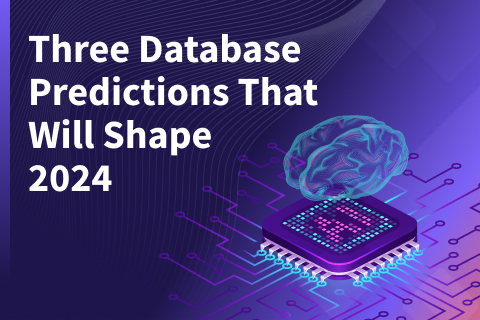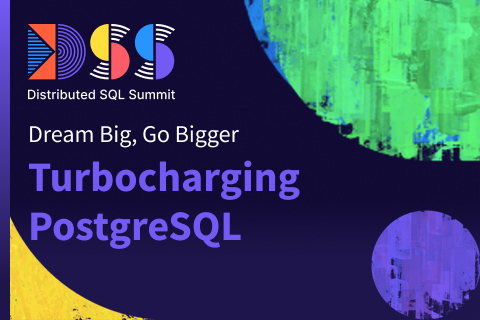Yugabyte Has Arrived!

Today, we are launching Yugabyte out of stealth and announcing the availability of YugabyteDB’s first public beta release. Yugabyte offers an open-source, cloud-native database for mission-critical applications. Yuga in Sanskrit represents an era or an epoch (about 4.32 million human years), a very long period of time. We picked the name Yugabyte to signify data that lives forever without limits. Our ultimate goal is to simplify data that is critical to businesses. Read our official press release here.
At Yugabyte, we enjoy solving hard data problems. As a team, we have worked first hand on a number of databases such as Apache HBase, Apache Cassandra (from even before it was open sourced), Oracle, and RocksDB. We were the team that built and ran Facebook’s NoSQL platform that powered a number of user-facing, real-time applications such as:
- Facebook Messages with many petabytes of online data — storing the message content, thread info and search indexes in a unified database
- ODS, a timeseries metrics database for Facebook’s private cloud, ingesting and analyzing several billion data points per day
- Fraud detection to identify tens of thousands of fake users on the site per day — to ensure a good user experience on the site
We know all too well what it takes to power such mission-critical applications in a cloud-native architecture — and we are passionate about simplifying the database layer for anyone building mission-critical applications such as the ones above.
Increasingly, enterprises and startups alike are building exactly the type of apps mentioned above in order to digitize their businesses and stay relevant to their customers. This is because customers have come to expect good user interfaces, global availability and consistency of data, real-time fulfillment as well as a personalized experience. Companies like Amazon, Netflix, Uber and Airbnb have raised customer expectations to a whole new level with their seamless user experience and extreme agility. But these companies have a lot of technical expertise. They have embraced a microservices-based architecture, and have innovated on both the stateless applications tier as well as the data layer:
- The Application Tier: These tech companies have embraced CI/CD driven rapid software delivery. The container ecosystem, led by Kubernetes and Docker, is being adopted as the way to build, manage, and operate the stateless application tier.
- The Data Layer: These tech companies have built a home-grown, sophisticated data layer that enables their developers to build better apps with agility and operate them in a cloud-native fashion. These companies offer complex DBaaS platforms to their app developers with large teams supporting them.
But for both the traditional enterprises as well as small startups, this data layer is still an unsolved problem. It requires building a new solution ground-up, needing significant dev and ops investment.
What makes the data layer so complex?
Mission-critical applications today have a need to:
- handle diverse workloads (key/value, flexible schema or relational)
- support diverse access patterns (customer records, IoT, time series data)
- enable caching for low-latency access
- run real-time analytics (for example — Apache Spark to build machine learning based apps)
To achieve this, a plethora of databases are used, which are data silos. The knowledge of what data to store in which silo is built into the applications, making them both hard to build and hard to operate in production. To make matters worse, there is a need to move the application to a cloud-native architecture — be it on the public cloud, on-premises or hybrid environment. The primary driver for this move is making the infrastructure agile, scalable, re-configurable with zero downtime and geo-distributed. Currently, these features are either achieved with a huge investment in engineering and operations teams or not implemented at all because of the high complexity.
Introducing YugabyteDB
YugabyteDB is purpose-built to address the above challenges for the data tier, and serves as the stateful complement to containers. Yugabyte offers a unified database while providing strong correctness guarantees and high availability. You are no longer forced to create infrastructure silos for each workload or choose between different flavors SQL and NoSQL databases. YugabyteDB achieves this by offering both SQL and NoSQL in one platform, enabling developers to focus on building the application instead of building out the data architecture needed for it.
Today, Yugabyte emerges out of stealth with a number of forward-thinking companies working with us in our early access program — folks who started using our platform, provided us feedback and ultimately are now moving their user-facing, business-critical data onto our data platform. The business value they want to realize is that they can focus on building apps with a better user experience at a lower total cost and with high agility.
If, like our early access partners, you are a business trying to simplify the data layer needed for building user-facing or real-time applications, please give YugabyteDB a spin or reach out to us. We would like to help you build better applications with greater agility.
We would love for you to be a part of our journey by joining our open-source community! If you would like to learn more, come meet us at QConSF.


